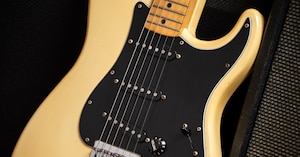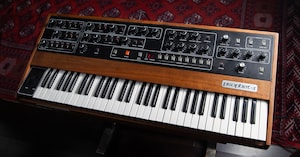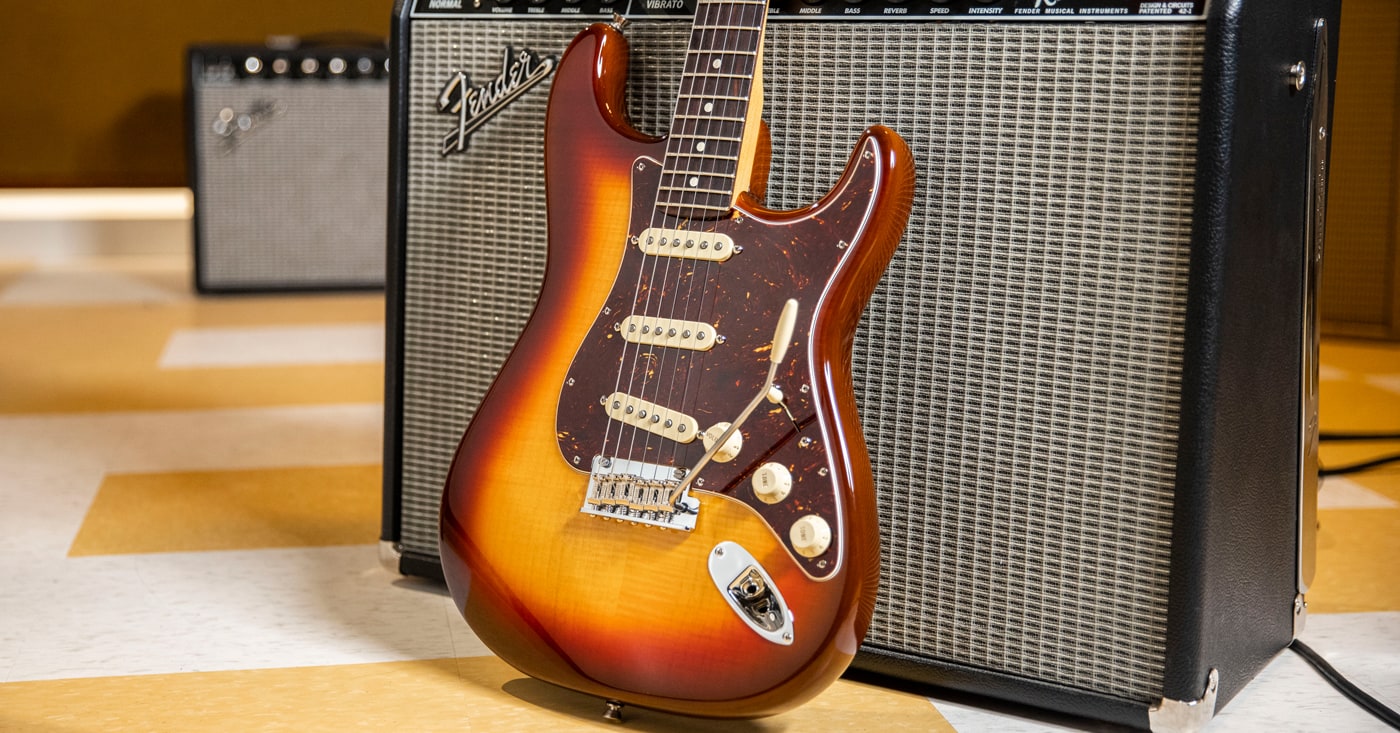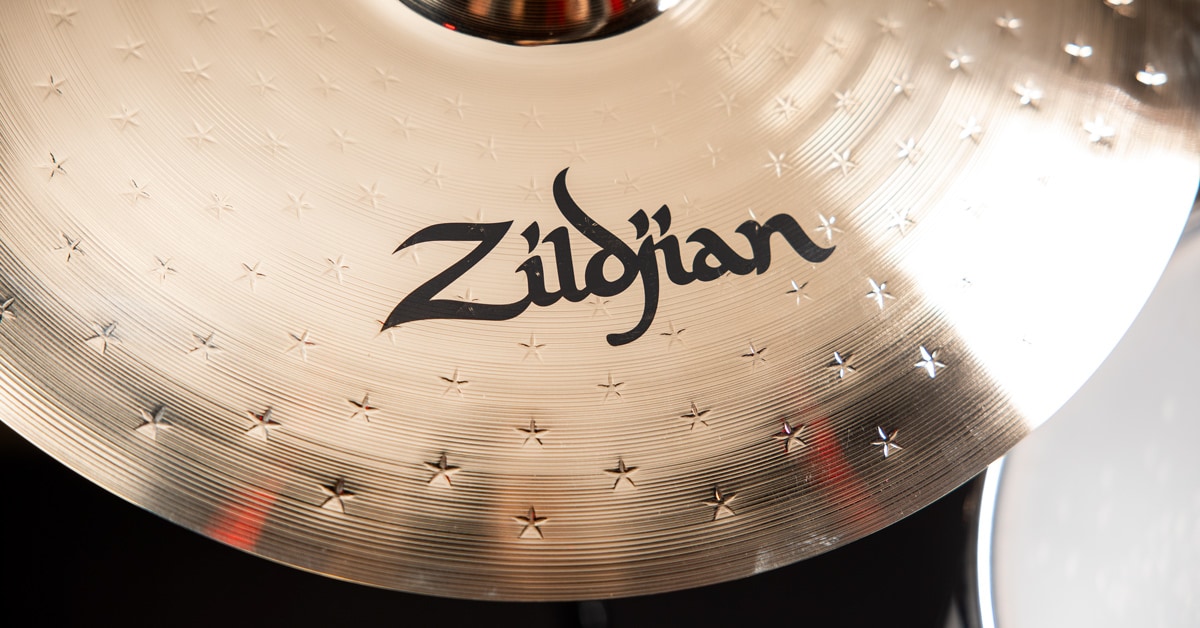As the popular Simmons Titan lineup progressed from a fun and educational, entry-level e-kit (Titan 20) to a model designed for intermediate players (Titan 50), drummers certainly didn’t need psychic powers to foresee a no-compromise option targeted at advanced players was on the drawing board.
But getting the new Titan 70 from concept to an actual instrument took more than simply peeking into the future.
Serious players typically demand powerful gear, so the Titan 70 had to deliver exceptional audio quality, great feel, easy and natural playability, multiple-zone pads (for different drum and cymbal textures), comprehensive sound and preset editing, and seamless integration with DAWs and sample libraries for home-recording musicians. Simmons Product Manager Jeff Laity is the perfect guide to detail all of the hoops the development team summersaulted through to ensure the Titan 70 delivered superlative performance for even the most demanding drummers. You’ll soon learn why Laity often launched into his explanations with “It took a long time to …”
Was the Simmons Titan 70 project developed in parallel with the other Titan models?
Jeff Laity: Yes. We had an opportunity to refresh the entire Simmons line—record new sounds, make a new industrial design language, develop a new user interface, release a new app and so on. All of that drove the production of the Titan 20, Titan 50 and Titan 70. But to get the Titan 70 to the level we wanted, we took our time with it, and we're really happy with how it turned out.
What are some of the features that distinguish the Titan 70 from the other Titan models?
The Titan 70 is for a more advanced drummer who demands more musical and performance options. To start, there’s more storage in the Titan 70, which allowed us to double the number of sounds we could put into the Titan 50, as well as explore other styles. For example, the Titan 70 has more traditional jazz and metal sounds than the Titan 50, and everything rings out for its full decay time. There’s also a natural, stereo room sound. In addition, the Titan 70 offers dual-zone toms and a three-zone ride cymbal that provides bell, bow and edge crash sounds. But rather than looking at this as just more zones to hit, we think of it in the context of a more advanced drummer who wants to play with more style and finesse. They might dig into the ride cymbal bell for one part of a song, play a cowbell or tambourine for another part, and add other colors to their performance.
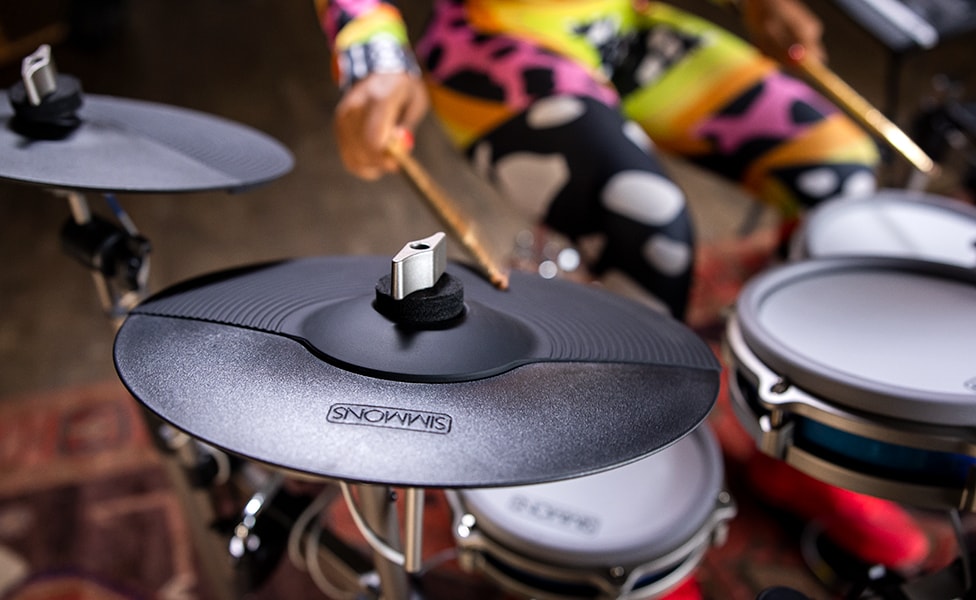
What was the approach to the sampling sessions for the Titan series sounds?
Our approach was to recreate some of the drum sounds heard on classic albums from some of the biggest names in rock. So, we went into the sessions looking to capture a breadth of drum sounds, rather than just record a specific Ludwig, TAMA or Yamaha kit. For example, the process was not simply about sampling the types of drums and cymbals used on classic recordings, it was also about recreating the room environment, the microphone placement and the mixes themselves. We looked at everything that went into the production of those tracks. Our sessions were pretty extensive.
And each sample was recorded in stereo, right? So, you’re hearing much more than a mono mic on a tom. You’re hearing a more expansive perspective, due to signal bleed from the room, the overhead mics and even the snare mics.
The whole kit is recorded in stereo, and everything is mixed together to get a realistic sound. For instance, positioning one mic on a cymbal doesn’t produce a realistic sound. But, set up multiple mics in the room, and you get a cymbal sound that’s natural, immersive and dimensional—especially when heard through headphones. We set up 22 microphones in the studio, so we had a lot of perspectives to play with during the mixdown. Furthermore, the mixes were based on a specific genre. A heavy rock kit might have a lot of room sound mixed with the drums, whereas a traditional jazz kit would be tailored for a tighter, drier sound.
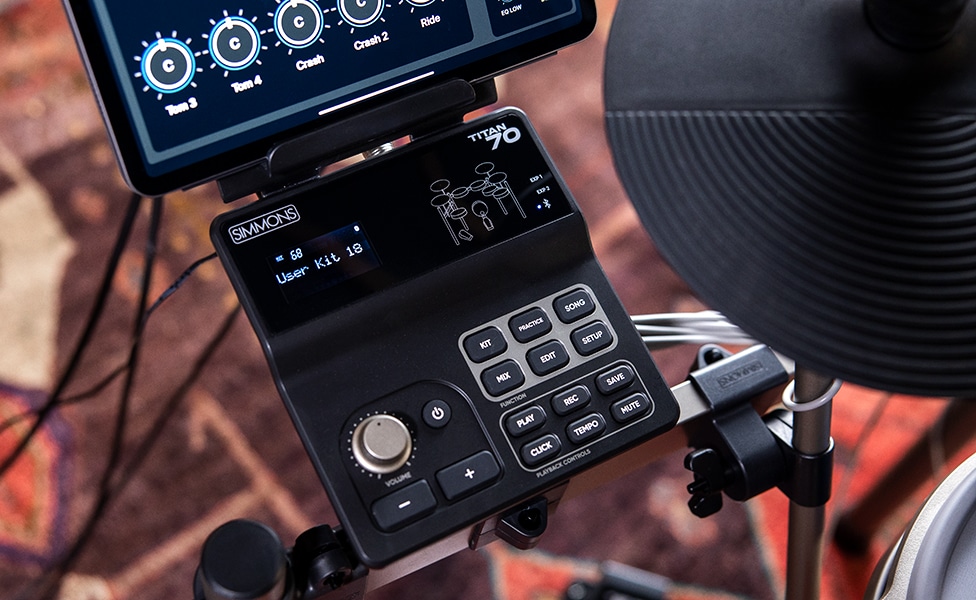
Is there a way to dial the reverb back if, say, you love the metal kit, but want a little less room sound?
One of the sound-editing controls available is Decay, and it works really well for controlling reverb and dampening the drums. But the Titan 70 also has 314 drum sounds onboard, so you should be able to find everything from small room environments to huge spaces.
How about if I want to use a ’70s, yacht rock-style kick drum with the rest of the metal kit?
You can completely customize kits from the control module and the Simmons Drum app—which has a bigger interface for flipping through all of the different sounds. There are 20 user kits to store your favorites.
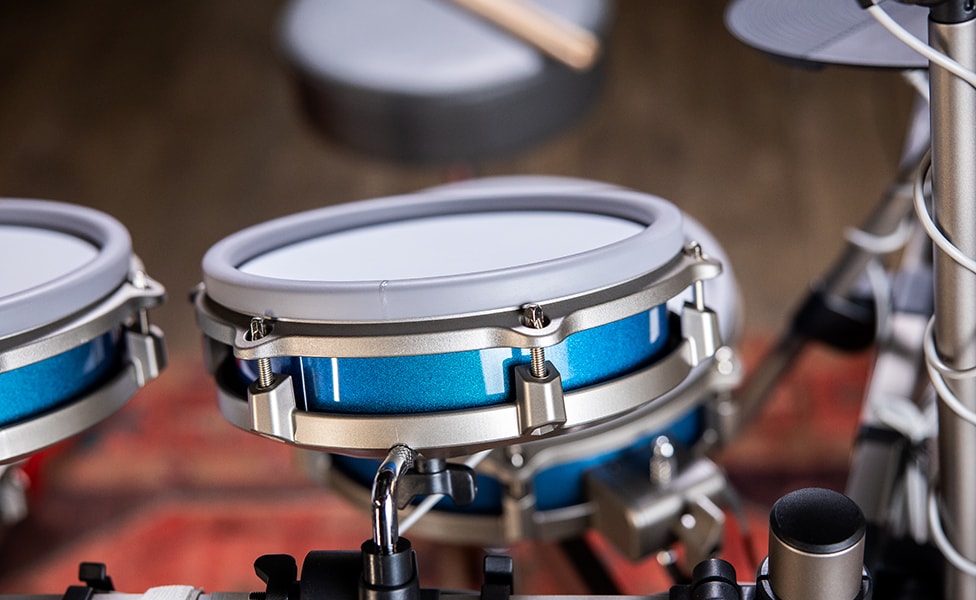
How did you and your team decide which classic album sounds and styles to put into the Titan 70?
We worked with a lot of drummers to fine-tune the sounds. They would help us find out things, such as whether a different snare drum might work better for a particular style, or if the cymbal we had wasn’t suitable for a certain genre. There was a lot of back and forth with all of our testers before we’d come up with the final result.
Regarding the multiple-zone pads and cymbals, how specifically do those features provide a superior playing experience for more advanced drummers?
We spent a long time talking about the sound and the feel of the Titan 70. We have lots of great technology in the kit—such as Bluetooth audio, app support and things like that—but what people really want out of a musical instrument is a great feel and a great sound. For example, we had to be sure that snare rim shots and ghost notes performed on the Titan 70 feel natural, and that whatever a drummer is playing is exactly what they hear. It doesn’t feel like an electronic gadget that’s confusing what you’re actually playing.
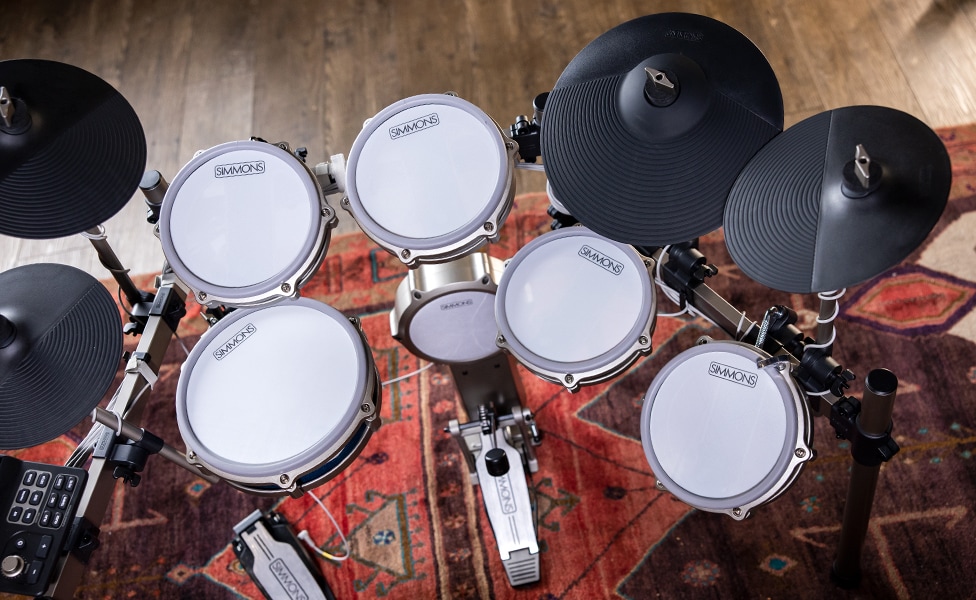
How did you approach delivering a natural and organic “acoustic drum” feel while using samples and DSP for the Titan 70 sounds?
A snare drum sound needs to encompass everything from playing soft to loud. Then, a rim shot is a separate sound altogether. So, we have multiple recordings for the snare attacks to ensure you're not hearing the exact same sample triggered over and over. In fact, all of the individual acoustic drum sounds have different recordings from soft to loud—which adds to the realism. We also have Variable Attack Response, which is DSP inside the module that adds subtle dynamic and sonic variations—emulating what’s happening when a drummer is playing an acoustic kit and cymbals. It’s not the type of thing that should be noticeable. It just feels more natural when you play. We worked very hard on the transitions between the sounds because you don't want to hit slightly harder and, suddenly, you hear a completely different sound, or the exact same sound. It took a lot of effort to get everything feeling natural.
Outside of zone and sound differences, is the Titan 70 hardware different from the Titan 50?
It is. The kick drum is larger and heavier duty. It feels really nice. There's a PVC wrap around the toms and snare, so they look great. The ride cymbal has a large, 12" surface, which makes it easier to play the three zones. The rack is also larger and thicker. It’s a bit more premium.
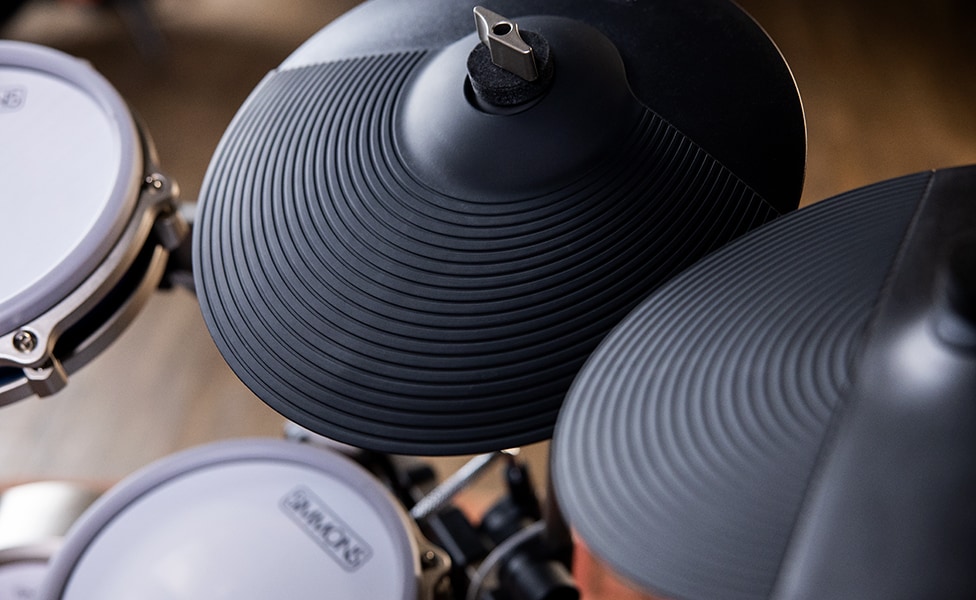
How do you expect most players to use the Titan 70?
A lot of people use electronic kits for silent practice. You really saw an explosion of electronic drums during the COVID lockdown, when people were trapped at home—possibly with their whole family in an apartment building. They wanted to play drums, but without getting kicked out of the house. So, that’s a big part of it. The Titan 70 also works really well for recording. You can trigger software plug-ins in your DAW using it as a MIDI controller over USB. In addition, if you just plug a USB cable from the Titan 70 into a computer, it will see it as an audio interface. This makes it very easy to record the output of the drum module into your DAW.
If a drummer wants more toms or cymbals for their Titan 70, is the configuration expandable?
The Titan 70 module has two dual-channel expansion inputs, so you can continue to add more pads. We're also going to release more pad and cymbal accessories in the future that will take advantage of those expansion inputs.
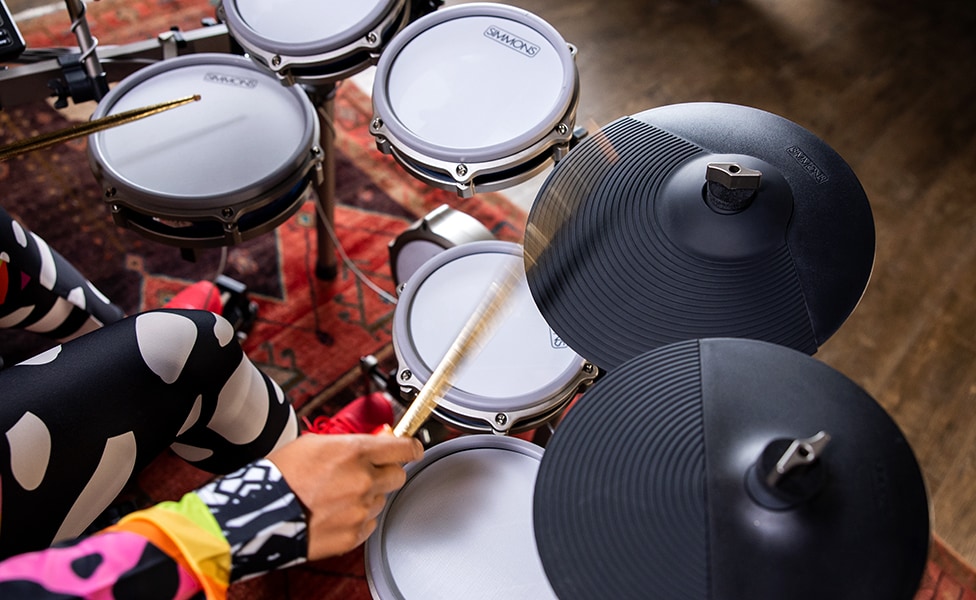
Can you tell us what Bluetooth functionality offers players?
We have Bluetooth MIDI for app integration and Bluetooth audio, which you can use to play audio from videos or educational apps through the module. Both the onboard Titan 70 sounds and the audio input are routed to your headphones, so that you can play along with the video content. Much like the Titan 20 and Titan 50, the Titan 70 also offers Practice and Play Along modes. The Simmons app even has a feature where you can slow down the music without changing the pitch, so you can start learning something slowly, and then work up to full speed at your own pace.
Very cool! Thanks for your time, Jeff!


